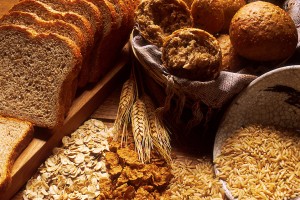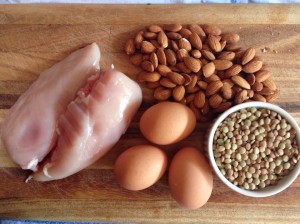Often times, the first thing that comes to a person’s mind when considering weight-loss is a workout routine. While exercise is extremely advantages both mentally and physically, it is not the top propriety of a well-constructed training program. The most essential and critical part of any fitness regimen is nutrition. This is true for any type of fitness goal, from losing weight to gaining muscle to building endurance and strength, to simply maintaining health. Nutrition is not only going to give you the energy you need to perform well in your workouts, but it will help with optimal recovery as well as aid in better body composition.
Nutrition is likely the biggest reason why people fail to reach, or give up on, their goals. There are so many different opinions out there, all seeming to come from ‘experts’ themselves. Eat clean. Go vegan. Paleo is the way to go. Cut carbs. Avoid fats. Eat this, this, and this, but don’t have this, this, this and that. Catch my drift? People have many different ideas based on what they believe to be the best type of diet. In reality, no one should be forced into someone else’s beliefs. There is a general guideline to proper nutrition and it is up to that person to choose which foods they would like to add into that guideline and which foods they want to avoid. I, for example, don’t eat pork as my religion forbids it. However, if I am training a client who doesn’t hold the same belief as me I would not tell them that pork is off limits. The same goes for vegetarianism. Just because I generally get my protein intake form animal sources does not mean I would tell a vegetarian they should do the same, just as a vegetarian should never prohibit meat to others just because they don’t eat it themselves.
The first step to learning about proper nutrition is to rid your mind of these ‘fad’ diets. If you want to eat organic, go for it. If you want to consume a strictly plant based diet, be my guest. If you want to limit your food sources to what the cave men ate thousands of years ago, that is up to you. None of these diets are wrong, nor are they right for every person as each individual differs in beliefs, tastes, cultural dishes, etc.
Proper nutrition is simple; it is made up of five types of macronutrients (macros), which are nutrients that our bodies need in large amounts, as opposed to micronutrients which are nutrients that our bodies need in small amounts such as vitamins and minerals. When we think of nutrition, we really only need to consider our macronutrients because if we are eating those properly then we will typically get all of the micronutrients we need. So, what are macros?
There are five types of macronutrients which can be divided into two categories. The first category of macronutrients contains carbohydrates, proteins and fats, and these are the macronutrients that provide us with a lot of energy and the bulk of substance we use to build up our tissues. The second category is made up of fiber and water, which provide us with little to no energy but are nonetheless good for our health. Every day we should be consuming a certain amount of protein, carbs, fats, fiber and water. Pretty simple right? You are so close to becoming an expert in proper nutrition! All that’s left to learn is how each of these macronutrients works in the body and how we can appropriately balance them in our diets.

Carbohydrates
Carbohydrates are the preferred energy source for the body and brain. Although they have received a bad rep with all of the ‘low-carb’ diets out there, the truth is your body needs them to run and perform they way you want it to. Cabohydrates are made up of foods such as rice, wheat, oats, barley, beans, potatoes, fruits and vegetables. The majority of your carb intake should come from wholesome carbs such as whole grains, brown rice, sweet potato, ect. The exact amount each person needs will vary based on individual differences and goals, but in general, 45-65 percent of your total diet should be comprised of carbohydrates.

Protein
Proteins are essential for growing and building tissues within the body such as muscles, blood, bones, organs, hair, skin and nails. Protein aids in building and maintaining muscle, satiation, and helps to burn calories due to its thermogenic properties. All foods from meat and poultry, seafood, eggs, dairy products beans soy products, and nuts are considered proteins. It is a good idea to select a different variety of proteins to improve the health benefits. Healthier proteins are those which are lean and lower in fat such as chicken or turkey breast, leaner cuts of beef, white fish, and low-fat yogurt/milk. As with carbohydrates, the amount of protein one should eat will vary by person based on their age, height, weight, etc, but in general, 10-35 perfect of your total daily calories should come from protein-rich foods.

Fats
Lipids, or fats, provide the most energy out of all the macronutrients. The overall diet should consist of approximately 20-35 percent of fats. The majority of your fat sources should come from the ‘healthy’ fats, also known as unsaturated fats. These come from foods like salmon, olive oil, nuts, seeds and avocados.

Fiber and Water
Fiber does provide us with a small amount of energy, but not much. It is, however, good for intestinal health and it influences some metabolic reactions within the body. Women should be eating about 25 grams of fiber per day while men should consume around 35 grams per day. Fiber comes from nutrient-rich plant foods such as whole grains, beans, nuts, fruits and vegetables.
Water is an essential means of survival. There are a lot of different opinions in the diet world about how much water one should drink. The truth is, there is no single rule for everybody; some people need more water than others and some people need less. A general rule of thumb is to drink whatever is comfortable for you, making sure that you are keeping hydrated and are not feeling thirsty. An approximate amount of fluids to drink per day is between seven and eight glasses, but again it will differ based on the individual.
Now you know everything you need to know in order to eat healthy, balanced, and according to your preferences. The world of fitness likes to make everything complicated by using personal beliefs about nutrition or foods and trying to apply these beliefs to everyone. All you really need is this general guideline of macronutrients and you can tailor food choices to your needs. I hope this has inspired you to stop limiting yourself to unnecessary diets and eat the foods you love with balance and control!





 build muscle, strength, or changing their appearance. A twice per week training frequency is when each muscle group is worked twice per week. This is ideal for intermediate and advanced trainees with any type of goal. A three times per week training frequency is when each muscle group is worked three times per week and is ideal for beginners with any type of goal.
build muscle, strength, or changing their appearance. A twice per week training frequency is when each muscle group is worked twice per week. This is ideal for intermediate and advanced trainees with any type of goal. A three times per week training frequency is when each muscle group is worked three times per week and is ideal for beginners with any type of goal.

